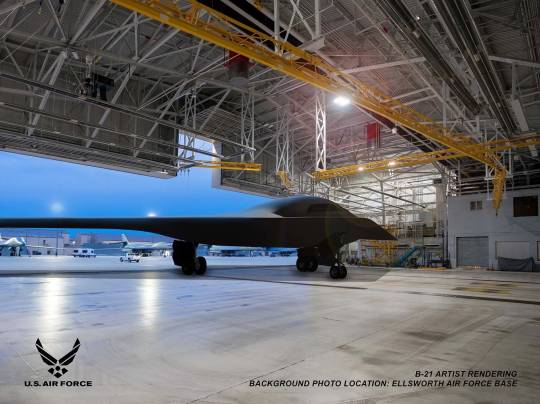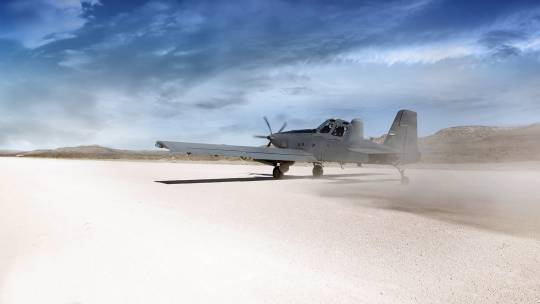#kelsey d. atherton
Text
"Andor does not answer the questions of what governance the rebellion will offer, though for the first time we really get a glimpse at a broader ideological program than just imperial overthrow. What Andor does, instead, is show that order and rebellion are shaped by the material of life, the conditions inherited and experienced by those who will make history.
In this reading, the Empire isn’t just an engine of evil constraining the galaxy. Empire is also a structure of evil, maintained by people who show up for work, send each other memos, and manage violence as it suits their career goals. For Tarkin, as for Partagaz, doctrine of Imperial Rule isn’t the best answer, it’s simply the only answer. It’s also why they both lost."
- Kelsey D. Atherton, from "Tarkin, Revisited." Wars of Future Past, 9 December 2022.
#kelsey d. atherton#quote#quotations#star wars#andor#structuralism#systems theory#historical materialism#resistance#fascism#totalitarianism
35 notes
·
View notes
Text
We Are Very Close To Nuclear War: Revelation 8
National Archive / Getty; The Atlantic
How Close Are We to Nuclear War?
Recent advances in military technology may push us closer to the edge.By Kelsey D. Atherton
NOVEMBER 18, 2022
On Tuesday, a missile landed in Przewodów, a Polish village near the border with Ukraine. Two people were killed in the blast. Their deaths were a direct consequence of Russia’s ongoing invasion of Ukraine, though…

View On WordPress
#Andrew the Prophet#andrewtheprophet#china#daniel 7:7#ICBM#Missile#nuclear#program#Russia#the prophecy#theprophecy#weapon#Weapons
0 notes
Photo

(via Why the B-21 bomber won't be getting a drone escort | Popular Science)
The B-21 bomber won’t need a drone escort, thank you very much
The Air Force's next-gen stealth bomber will be flying solo. Here's why.
BY KELSEY D. ATHERTON | PUBLISHED JUL 23, 2022 7:00 AM
TECHNOLOGY
The B-21 will eventually replace the B-2. US Air Force
SHARE
When the new B-21—the Air Force’s next-gen stealth bomber—goes to war, it will do so without a drone escort. The news, broken by Breaking Defense on July 16, is a sharp reversal from earlier plans that had included developing a drone fighter that could travel alongside the bomber and protect it.
The story of the planned and then abandoned drone escort is a smaller part of the broader story about the B-21, the first new bomber developed by the United States in 30 years, and the first one developed entirely after the Cold War.
News of the cancellation of the drone escort came at the Royal International Air Tattoo, a massive military air show held in England every July.
“The idea of a similar range collaborative combat aircraft is not turning out to be cost effective, so it looks like we’re not going to go that direction,” Air Force Secretary Frank Kendall told Breaking Defense in an interview at the event. Kendall had previously announced the possible drone escort in December 2021, with the intention of the drone fighters being a budget item for 2023.
Abandoning the concept of a fighter escort, even an uncrewed one, for the new bomber is part of the long history of failed attempts to protect bombers en route. Three separate but related programs are key to understanding the impact of this cancellation: the B-21 itself, escort fighters, and the Loyal Wingman drone fighter program.
The B-21
The B-21 Raider began its history as the Long Range Strike Bomber. Rebranded the B-21, and with its “Raider” name stemming from the Army Air Force’s 1942 raid on Tokyo, the aircraft will be the fourth bomber in service with the Air Force. These include the ancient B-52 bombers, which have fought in every US war since Vietnam, the supersonic B-1 bombers, which entered service in 1986, and the stealth B-2 bombers, which first saw combat in the Kosovo War in 1999. The B-21 will be closest in conceit to the B-2.
Those bombers all represent a range of abilities and design eras. While all were built to carry both conventional and nuclear weapons, today only the B-2 and B-52 do so. Nuclear capability was engineered out of B-1 bombers in upgrades done as part of arms control limits on total nuclear-capable bombers.
Early in the development of the Long Range Strike Bomber, the Air Force explored the possibility that the bomber could fly uncrewed, though that notion was roundly rejected for nuclear missions, and probably for other bombing runs, too.
As designed, the B-21 will be a stealth long-range bomber capable of carrying both conventional bombs and nuclear weapons. Long-range in this sense is intercontinental: the B-1 can fly almost 6,000 miles with a useful payload, while the B-2 can reach nearly 7,000 miles, and the B-52 can fly close to 9,000 miles. (Air refueling helps.) To replace existing bombers and accommodate planned future need, the Air Force is requesting that a minimum of 100 B-21s be built, with construction on the first six B-21s underway as of February 2022. (It has not yet flown.)
For countries that want to protect against bombers, the weapons they have historically turned to are anti-air missiles and fighter aircraft. Stealth features, which the B-2 was built around and the B-21 will incorporate as well, make it harder for sensors like radar to detect and track a plane, limiting the danger from anti-air missiles.
Escort fighters
Fighter jets that can intercept and attack bombers are a hard threat to mitigate. In World War II, bombers, especially the “Fortress” line of which the B-52 is still a part, adopted on-board guns to shoot fighters. (The B-52’s tail guns saw use in Vietnam, but the guns were removed in October 1991, while the gun’s rear-facing radar systems were retained.) That defense strategy struggles against the threat of long-range anti-air missiles and especially at the high speeds of jet combat, which is where the possibility of an escort fighter is appealing.
An escort fighter is one designed to fly alongside bombers and, in the event of interception, protect the bombers from the hostile fighters. A variant of escort is the “parasite” fighter, which rides attached to or inside a bigger plane, waiting to be released when needed. While the parasite fighters save on fuel, carrying one reduces a bomber’s effective payload and also requires the difficult task of landing a fighter back on a plane after the bombing is done. DARPA is exploring cargo planes that can launch drones, for a similar effect, but without having to worry about a pilot on board or their safety after the mission.
If the escort is to fly alongside the bomber, then, it needs to have the same range as the bomber, while still being in a small enough airframe to be useful and maneuverable as a fighter when it falls under attack. Removing the pilot from a cockpit saves some room in a fighter escort, but the plane would still need to carry enough fuel for an intercontinental journey, enough sensors and weapons to fight, and if the drone is designed for repeat use, enough fuel to carry it back afterwards. That is a tall ask, especially when crewed fighters like the F-16 Fighting Falcon have a one-way travel range of just over 2,000 miles, and a shorter combat effective range.
Mid-air refueling can extend the range of both bombers and fighters, but it would be another hurdle for a long-distance drone escort fighter. Before adding “autonomous mid-air refueling” to the list of tasks for a drone, it is likely the Air Force will want to try a shorter-range drone fighter first.
The Loyal Wingman
The Air Force is already working on a drone fighter of sorts, just not one built for the great distances of bomber flights. The Kratos Valkyrie, part of the Air Force’s “loyal wingman” program, is a drone designed as a relatively inexpensive complement to fighter squadrons. And Skyborg, another Air Force program to create an autonomous pilot for aircraft, is an effort to enable uncrewed planes to fly alongside crewed craft.
These drones are designed to fly alongside fighters crewed by pilots, with the autonomous system of the drones possibly carrying out tasks like flying ahead. By keeping extra sensors and possibly even weapons in the loyal wingmates, pilots of expensive fighters like the F-35 could send drones in for riskier missions, like scouting and attacking hostile surface-to-air missile sites.
Even as the prospect of a drone fighter escort for bombers is unlikely, the loyal wingman program remains a priority for the Air Force. The Air Force is still developing drones that can fly and fight alongside crewed planes, even if they are not yet bomber escorts. For now, the B-21 will have to rely on stealth and speed to keep it safe.
Kelsey D. Atherton
Kelsey D. Atherton
Kelsey D. Atherton is a military technology journalist who has contributed to Popular Science since 2013. He covers uncrewed robotics and other drones, communications systems, the nuclear enterprise, and the technologies that go into planning, waging, and mitigating war.
0 notes
Link
Remote sensors exist where it is tedious, dangerous, or difficult for humans to regularly reach them. Those same characteristics make maintenance difficult, by design, and tax already-strained batteries to the edges of their lifespan. What if, instead of sending humans to maintain remote sensors, drones could fly close by and then, through radio waves, remotely recharge those same remote sensors?
With such a system, sensors placed in far flung corners of everything from crop fields to battlefields could be maintained by regular contactless charging from visiting drones.
“In the proposed approach, a UAV transmits radio frequencies to each sensor, which has an antenna for detecting the signals,” according to a summary in IEEE Spectrum of a recent study. “The signals are then conveyed to a rectifier, which converts the signals into electricity. This power can be used to charge the sensor and/or activate it.”
Continue reading ...
#Kelsey D. Atherton#forbes#Kelsey Atherton#landmines#defense technology#technology#land mines#mine action#battlefields#drones#crop fields#drone#uav#uavs#unmanned aerial vehicle#unmanned aerial vehicles#sensors#visiting drones#spider munition system#munitions#explosives#conventional weapons#conventional weapon#remote sensing#remote sensors#radio frequencies#radio frequency#IEEE Spectrum#study#studies
0 notes
Photo





(X) (X) (X)
#george floyd#all lives cannot matter until black lives matter#us law enforcement is out of control#us police crisis#white supremacism#white supremacist terrorism#news#america 2021#the united states is a failed state and a failed society#racism#nancy pelosi#alex pareene#kelsey d atherton#us politics
0 notes
Quote
Pardoning Nixon got us Iran Contra. Pardoning the people involved in Iran Contra got us the Torture Program. Refusing to even pursue charges against the Torture Program got us Trump, who regularly pardons war criminals. We've tried elite impunity and it has unequivocally failed.
Kelsey D. Atherton
51 notes
·
View notes
Text
"Defense technology journalist Kelsey D. Atherton made a different, and quite crucial, point. “[M]aybe the weirdest thing about the right’s strategy of quitting international institutions is they were built, expressly, to give the United States an outsized role in shaping and directing the post-1945 international order, but they can only do that so long as the US stays in.”
He’s right. Once again, Trump has led the US out of an international agreement that we used to dominate. Just two days ago, president of the Council on Foreign Relations Richard Haass said that Trump’s foreign policy doctrine should be called the “Withdrawal Doctrine.” Trump has pulled out of the Trans-Pacific Partnership (TPP) trade pact designed to pressure China to meet international rules; the Paris climate accord; the 2015 Iran nuclear deal; the Intermediate-Range Nuclear Forces Treaty with Russia, limiting nuclear weapons; UNESCO, the U.N.’s educational, scientific, and cultural agency; the Open Skies Treaty that allowed countries to fly over each other to monitor military movements. He pulled U.S. troops away from our former Kurdish allies in Syria, and has threatened to leave the North Atlantic Treaty Organization—NATO—that ties 30 North American and European countries into a military alliance.
Now he has withdrawn the US from the World Health Organization that combats global disease and pandemics.
The U.S. walking away from our former allies benefits other countries, notably Russia, which is keen to destabilize NATO alliances."
- Heather Cox Richardson

The world is going to be very different when we come out of this.
2 notes
·
View notes
Photo


Where if not the top of a hill to test?
A hill is where at least two curves flatten and meet. I heard on “Democracy Now!” this week that over a million residents of Wuhan were tested on back-to-back days last weekend. My thoughts wheel around from statistics and turn to John Winthrop, in 1638. That lecture of his was “forgotten for nearly two hundred years” (Wikipedia). Every idea has its time; no idea’s time is guaranteed to match the lifespan of its human container. In “Letters from an American,” Heather Cox Richardson quotes Kelsey D. Atherton as saying “the weirdest thing about the right’s strategy of quitting international institutions is they were built, expressly, to give the United States an outsize role in shaping and directing the post-1945 international order.” If in looking at a city on fire you see only domestic disorder, have you not overlooked a Law of Physics? Do not certain flames in fact flower as an equal-and-opposite reaction to subjugation? To wit: to what points down the hill can Exceptionalism chart its course if not denial? Isn’t the road it leads to the selfsame American Way?
1 note
·
View note
Text

(source)
Kelsey D. Atherton @AthertonKD
In a generation we'll replace the Konmari method with the Cancarry method, where possessions are evaluated only on their utility in sustaining you across a drought-ridden burning sunscape, as you search in vain for a place where the weather works normally and the crops still grow
Do you, um. Want me to tell you what to do here? I’ve only been preparing since age 7.
1 note
·
View note
Text
How many war-boosters does the Washington Post need? Tuesday, the capital’s most influential paper announced that Max Boot, yet another white, pro-war, pro-Israel, blow-everything-up pundit, would be joining their opinion section. It goes to show, again, that the most certain way to move up in the media pundit universe is to consistently echo US national security orthodoxy—without pause or regret.
Aside from Nation editor-in-chief Katrina vanden Heuvel, Postcolumnists’ opinions on matters of war and peace range from supporting covert CIA operations and “targeted airstrikes” to outright regime change—with Boot falling on the far right end of this already very right-wing spectrum. One analysis from reporter Kelsey D. Atherton found that in 2012 Max Boot supported starting a new war or escalating an existing one once every 3.5 days. He has long championed the Iraq War (expressly defending it as recently as 2013), the Libya War, the overthrow of Assad, arming dozens of groups throughout the globe and launching an offensive war against Iran. Leftists are often criticized for calling the US an “empire”; Boot, in “The Case for American Empire” (Weekly Standard, 10/20/01), overtly advocated for one.
Boot adds nothing to an already hawkish Post opinion section except a more extreme version of it. As a measure of the Post’s ideological diversity on matters of war, FAIR looked at columnists’ support or opposition to the Iraq War. (You can view the list here.) Of the 23 current staff columnists who had a clear opinion on the Iraq War either before or in the aftermath of the invasion, 21 supported it. Only two, vanden Heuvel and libertarian Radley Balko, opposed the war. And Balko—then at Fox News—dropped his opposition the second the war was launched, under the then-popular cliche that “once the bombs start falling, the debate ought to end.”
Of 46 current staff columnists, three—Michael Gerson, Mitch Daniels, Ed Rogers—actually worked for the George W. Bush administration, or (in the case of Rogers) with a private consulting group working on war planning with the Bush administration, when the invasion took place. This means the Post currently has on staff 50 percent more people who helped carry out one of the biggest war crimes of the 20th of the century than columnists who opposed it.
Twenty-one out of 23 warmongers on staff aligns nicely with the Post’s broader support for US imperialism. Commenting on his paper’s support for the Iraq War in April 2003 (4/20/03), editorial page editor Fred Hiatt made clear this stance was nothing new: “On defense issues during the Cold War [the Post editorial board] tended to be fairly hawkish.” Indeed, the Post has not opposed a single military action by the United States since Ronald Reagan’s invasion of Grenada in 1983 (Washington Post, 10/27/83).
It’s a cliche to say US pundits “failed” on the Iraq War, but Boot’s rise to the top shows that they succeeded exactly as they were supposed to in the defense and amplification of United States national security propaganda. Much like the war on drugs is not a “failure” when one considers its true goal was to put millions of black and brown people in prison, those who pushed for invading Iraq were successful in their primary objective: selling the war to the US public. Boot—like 21 of his new colleagues—is simply being rewarded for a job well done.
Adam Johnson
1 note
·
View note
Text
Tweet from Kelsey D. Atherton (@AthertonKD)
Kelsey D. Atherton (@AthertonKD) Tweeted:
"These are systems that are not fixable by “voting” and will only change in two ways: with their complete overthrow and destruction by external forces or their systematic reform by people who do have that power and choose to wield it." https://t.co/pEHOlY64kc https://twitter.com/AthertonKD/status/1466167696375046144?s=20
0 notes
Text
Proj
CONTRETEMPS
REVUE DE CRITIQUE COMMUNISTE
Colin Powell : itinéraire d’un criminel de guerre
Kelsey D. Atherton
21 octobre 2021
Colin Powell : itinéraire d’un criminel de guerre
Excellence, dévouement, loyauté : la liste des nobles attributs dont Colin Powell a été affublé après sa mort est longue. Mais faire de tels éloges à celui dont le nom est associé à une guerre brutale qui a détruit…

View On WordPress
0 notes
Text
How Close Are We to the Bowls of Wrath? Revelation 16
How Close Are We to the Bowls of Wrath? Revelation 16
National Archive / Getty; The Atlantic
How Close Are We to Nuclear War?
Recent advances in military technology may push us closer to the edge.By Kelsey D. Atherton
NOVEMBER 18, 2022, 1:02 PM ETSHARE
On Tuesday, a missile landed in Przewodów, a Polish village near the border with Ukraine. Two people were killed in the blast. Their deaths were a direct consequence of Russia’s ongoing invasion…

View On WordPress
0 notes
Photo

(via This rugged new plane will support US special forces | Popular Science)
US special forces will soon get support from a rugged new aircraft
The program is called "Armed Overwatch." Here's what to know about the aircraft—and its roots as a crop duster.
BY KELSEY D. ATHERTON | PUBLISHED AUG 2, 2022 7:00 PM
TECHNOLOGY
The AT-802U. L3HarrisSHARE
On August 1, Special Operations Command (SOCOM) announced that the next plane in its inventory would be a single-engine prop aircraft. SOCOM will buy up to 75 AT-802U Sky Warden planes, built by L3Harris Technologies and Air Tractor. These planes will support special operations forces, like Delta Force or Navy SEALs, as they fight irregular wars.
The name of this program is “Armed Overwatch.” The contract announcement says it “will provide Special Operations Forces deployable, affordable, and sustainable crewed aircraft systems fulfilling close air support, precision strike, and armed intelligence, surveillance and reconnaissance, requirements in austere and permissive environments for use in irregular warfare operations in support of the National Defense Strategy.”
Irregular warfare is a broad term that is easier to define by what it doesn’t include. Regular warfare is when the uniformed soldiers of one nation fight the uniformed soldiers of another. These conflicts usually involve the whole range of conventional military forces, from rifles through tanks and artillery to fighter jets and bombers. Irregular warfare, by contrast, involves fighting against insurgencies, rebellions, and tracking down people linked to terror operations. It can also involve helping other countries’ militaries do the same.
For example, in 2003, the US invaded Iraq with a conventional war, which lasted until the collapse of Saddam Hussein’s military. Armed resistance afterwards to the American military and to the new government of Iraq became irregular warfare, and to this day the US deploys forces in the country to assist in training Iraq’s military in irregular warfare.
For SOCOM’s purposes, a plane that can support special operations forces doesn’t need to survive in a sky filled with hostile fighter jets or when the enemy brings dedicated anti-aircraft vehicles to the battle. Instead, what is most important is that the plane can fly easily, shoot what it needs to shoot, as well as take off and land if need be on rough runways and cleared fields, instead of dedicated airbases.
[Related: Navy SEALs could get new airborne backup. Here’s what the planes look like.]
Those characteristics, that rugged versatility, are likely why the Sky Warden won out over the four other planes SOCOM considered for the contract last summer. The contract initially awards $170 million, or about the price of two F-35A stealth jets, with a ceiling of $3 billion for the full fleet. L3Harris said in a statement that production will begin in 2023, for the initial lot of six Sky Wardens.
“We want to deliver game-changing, modular solutions to U.S. special operators for their hardest missions, and Sky Warden does just that,” Christopher E. Kubasik, CEO of L3Harris, said in a statement.
“Armed Overwatch” is a role that involves both scouting for targets and attacking enemies on the ground. While SOCOM considered planes that could also perform a transport role for the special operators, the Sky Warden is built to scout and to attack. To that end, the Sky Warden can carry over 8,000 lbs of payload while armored. The wings can carry a range of weapons, from 500-pound bombs to small missiles to sensor pods, and the center of the aircraft can host two heavier systems as well. The wing station can fit a gun, like a .50-caliber machine gun or a 20mm cannon. With a full load of sensors and weapons, the plane can take off on a runway of just 1,400 feet, and it can land on one 1,200 feet long. The tandem cockpit seats two pilots.
The AT-802 (note the lack of a “U,” which denotes the latest variant, the AT-802U, that SOCOM is getting) first flew in 1990, where its rugged airframe and heavy payload capacity made it an ideal crop duster. As a crop duster, the plane was used to spray crops on counter-narcotics missions, an action that sometimes saw the planes shot at by farmers defending their crops. “Years of coca crop eradication missions in South America resulted in the development of lightweight composite ballistic armor for the AT-802U cockpit ‘bathtub’ and engine compartment,” notes the Air Tractor page for the plane.
In other words, SOCOM is getting a plane with crop duster origins, and one that can be used for the military missions of special operators. The Sky Warden is armored against attack, provided the enemy it is facing is armed mostly with small arms, like machine guns and rifles.
This was a concern 13 years ago, when the Air Force announced a plan to purchase 100 such planes in 2009. Skeptics of the Air Force’s 2009 plan for a light attack plane similar to the Sky Warden noted at the time that insurgent forces could get portable and effective anti-air weapons that could threaten the aircraft. With the award of the Armed Overwatch contract this week, former Popular Science contributor Peter W. Singer, now a fellow at New America, revisited an article he wrote that year, tweeting, “And note, since writing that in 2009, the cropduster [Sky Warden-style plane] has not improved, while both the enemy capabilities and the unmanned alternative has obviously drastically improved.”
As nations like Germany and the United States offload old anti-air missiles to Ukraine for use in its war against Russia, the possibility exists that some of these weapons will make their way onto the black market. While old anti-air missiles may struggle against modern jets or be overkill for modern drones, they are perfectly suited for attacking planes like the Sky Warden. As SOCOM makes a big bet on how to fight irregular wars from the sky, it is also gambling that the enemies it finds will lack anti-air weapons, even as war makes those weapons more available.
Correction on August 3: This story has been updated to correct a typo that referred to the F-35 fighter jet as an F-25.
Kelsey D. Atherton
Kelsey D. Atherton is a military technology journalist who has contributed to Popular Science since 2013. He covers uncrewed robotics and other drones, communications systems, the nuclear enterprise, and the technologies that go into planning, waging, and mitigating war.
0 notes
Quote
The presidency is, on top of everything else, a sort of thermonuclear monarchy, a process that comes with no check and no balances. When Congress held a hearing about presidential launch authority in 2017, the focus was on the finicky definition of a legal order, about who would follow a legal order and what would follow a legal order and how lawyers tasked with determining the legality of killing millions within hours might craft arguments to assure that the action fell within the bound of the law. There is nothing at present, despite wishes and feverish Twitter-streams, to inhibit the one person in the United States with the authority to exercise such terminal power.
Kelsey D. Atherton, Our Nukes, Ourselves
3 notes
·
View notes
Text
This space-based weapon remains in the dark—for now
This space-based weapon remains in the dark—for now
This space-based weapon remains in the dark—for nowThe US was reportedly going to reveal the existence of a weapon in orbit. Here’s why that’s a bad idea. https://www.popsci.com/technology/what-is-the-us-space-weapon-in-orbit/
BY KELSEY D. ATHERTON | PUBLISHED AUG 26, 2021Space can only keep so many secrets. And, if everything had gone as planned for General John Hyten, vice-chairman of the…
View On WordPress
0 notes